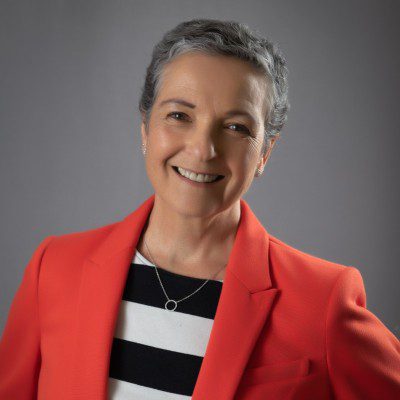Transportation Troubleshooting: Let’s Look at Vision Zero for a New Road Safety Mindset

I remember when automobile drivers and passengers could legally choose not to wear seat belts. Since the mid-1980s, legislators have taken away that choice in every state except for New Hampshire. But the result—thousands of lives saved and serious injuries prevented—has undoubtedly been worth giving up the dubious freedom to go beltless.
Better Vision
Today, as we see roadway fatalities rising and a disturbing 50-percent increase in pedestrian deaths during roughly the last decade, many transportation professionals are re-doubling their efforts using Vision Zero, an approach that has been successfully embraced in several states during the last two decades. This fundamentally new mindset envisions a transportation system in which most serious crashes are prevented. To achieve that, some of our cherished freedoms—especially the freedom to drive at maximum speeds—must be constrained.
First implemented in Sweden in the 1990s, Vision Zero has been adopted by the EU with an intermediary target of a 50-percent reduction in deaths and serious injuries by 2030. Europe already has seen a 36-percent reduction in road deaths from 2010 to 2020.
There’s a broad assumption that European countries are fundamentally different than the United States when it comes to traffic safety. However, many of these countries, such as Germany and the Netherlands, had higher fatal crash rates per capita than the United States in the 1970s. Recently, rapid progress is being made in countries such as Poland, where fatal crashes have been cut in half during the last decade. Based on such success and the lessons learned through these efforts, the Vision Zero concept is gaining significant momentum in the United States.
Success Spots
“Several early adopter Vision Zero cities, such as San Francisco, New York and Madison, Wis., have seen steady declines in the number of severe traffic crashes, even as the national rate has been increasing significantly,” says Jay Aber, vice president for Transportation and leader of the Future Ready Program at WSP in the United States. “Mostly, they’ve focused on reducing vehicle speeds with traffic calming and road diets; and providing more dedicated spaces for pedestrians, cyclists and other non-motorized users.”
Milwaukee also stands out in adopting Vision Zero and prioritizing safety of the most-vulnerable road users. “The city has a good Vision Zero program strengthened by its complete streets policy and handbook, and racial equity policies,” adds Jennifer Pangborn, a vice president in Transportation and Urban Planning at WSP who worked with Milwaukee on its street-design guidelines.
Pangborn’s mention of racial equity points to an alarming statistic within the already grim data on pedestrian injuries and deaths: Black and brown neighborhoods in many cities are experiencing very high rates of pedestrian fatalities. “It’s important to look carefully at this kind of data and use it to prioritize investments in safety,” she notes.
When Vision Zero advocates look around the country for the best examples, Hoboken, N.J., usually comes to mind. As reported in national media, the Hudson River town of 60,000 has gone about five years without a roadway fatality. The city achieved this with design changes (e.g., more bike and bus lanes, curb extensions and high-visibility crosswalks), reduced speed limits and a vigorous public-awareness campaign, all backed politically by the town’s voters and elected officials.
Mustering that type of political will isn’t easy, and implementing Vision Zero in sprawling car-oriented metro areas is much more complicated than in a small, densely populated town such as Hoboken.
Generating Urgency
Still, if we were talking about another preventable source of death and injuries—say, a contaminated water source or a chemical spill—voters and the media would demand that leaders do what it takes to stop the harm. But road injuries and fatalities don’t provoke the same level of urgency.
“The media doesn’t cover roadway fatalities and serious injuries like they do mass shootings or airplane crashes, because it’s such a distributed phenomenon—one person here, one family there—rather than a single event that can grab the public’s attention,” explains Aber.
What gives us hope is the growing interest and support at public agencies as well as other transportation planning and engineering firms.
“We’re seeing more cities, counties, MPOs and states talking about Vision Zero,” notes Pangborn. For example, in fall 2023, the American Association of State Highway and Transportation Officials (AASHTO) held a two-day national safety summit in Kansas City. The U.S. Department of Transportation adopted a Safe Systems Approach similar to Vision Zero and is funding hundreds of projects under the Safe Streets and Roads for All initiative (funded by the Bipartisan Infrastructure Law).
At WSP, we offered an internal webinar series on Vision Zero last fall, and the response from our staff was robust. Aber sees events such as that and the AASHTO safety summit as critical to achieving Vision Zero.
“It will require a massive industry education effort,” he told me. But it will also necessitate a paradigm shift in how policy makers and drivers think about safety—like what we’ve seen with seat belts.
Author’s Note: For more information about Vision Zero, visit www.wsp.com/en-us/services/vision-zero.
About Paula Hammond
Paula Hammond is senior vice president and national multimodal market leader, WSP USA; email: [email protected].


